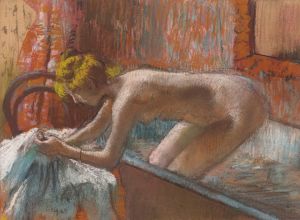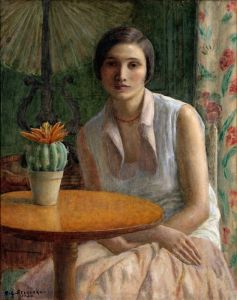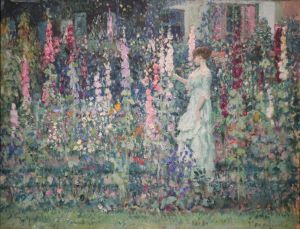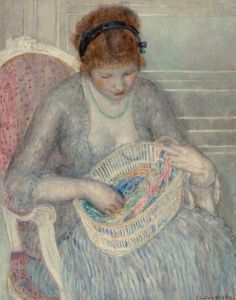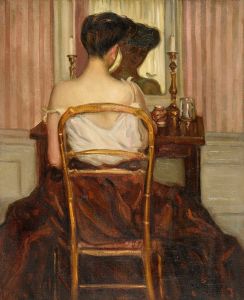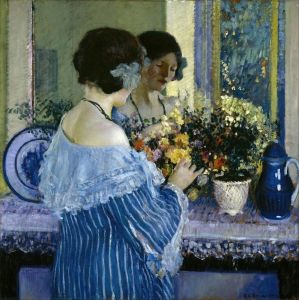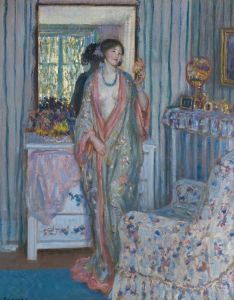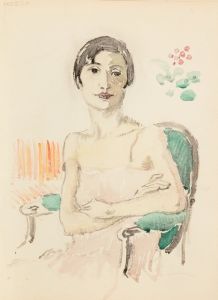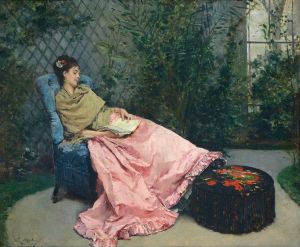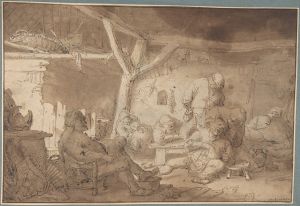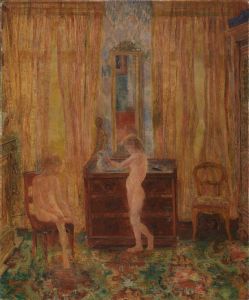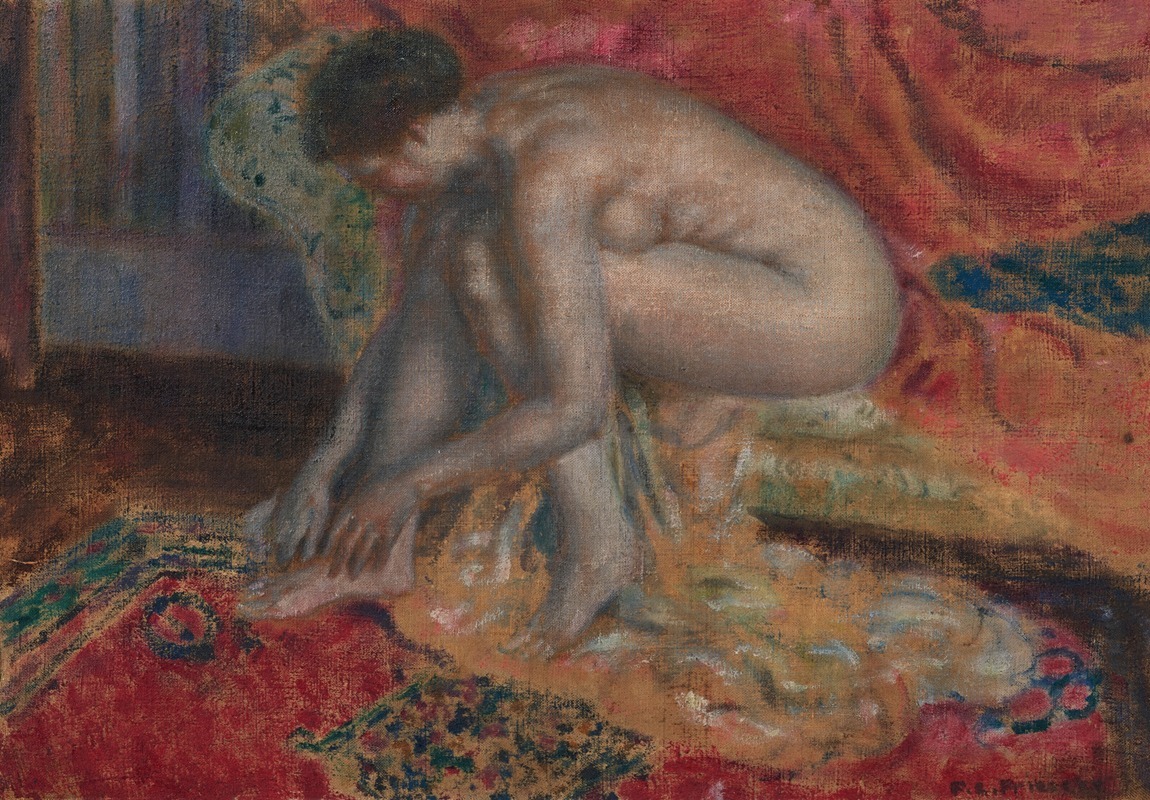
After the Bath
A hand-painted replica of Frederick Carl Frieseke’s masterpiece After the Bath, meticulously crafted by professional artists to capture the true essence of the original. Each piece is created with museum-quality canvas and rare mineral pigments, carefully painted by experienced artists with delicate brushstrokes and rich, layered colors to perfectly recreate the texture of the original artwork. Unlike machine-printed reproductions, this hand-painted version brings the painting to life, infused with the artist’s emotions and skill in every stroke. Whether for personal collection or home decoration, it instantly elevates the artistic atmosphere of any space.
"After the Bath" is a painting by the American Impressionist artist Frederick Carl Frieseke, who was active in the late 19th and early 20th centuries. Frieseke is best known for his depictions of women in intimate settings, often capturing them in moments of quiet reflection or engaged in everyday activities. His work is characterized by a vibrant use of color and light, drawing influence from both French Impressionism and American artistic traditions.
Frederick Carl Frieseke was born on April 7, 1874, in Owosso, Michigan. He studied at the Art Institute of Chicago and the Art Students League in New York before moving to Paris in 1898. In France, he furthered his studies at the Académie Julian and became associated with the Giverny art colony, where he was influenced by the work of Claude Monet and other Impressionists. Frieseke's time in Giverny was pivotal, as it allowed him to develop his distinctive style that combined elements of Impressionism with his own unique approach to color and composition.
"After the Bath" exemplifies Frieseke's focus on the female form and domestic interiors. The painting typically features a woman in a private moment, often depicted in a boudoir or bathroom setting. Frieseke's use of light is particularly notable, as he often employed dappled sunlight to create a sense of warmth and intimacy. His brushwork is loose and fluid, capturing the ephemeral quality of light and the softness of the human form.
The subject matter of "After the Bath" reflects Frieseke's interest in capturing moments of personal introspection and tranquility. The painting is part of a broader series of works that explore similar themes, showcasing women in various stages of bathing or dressing. These works are celebrated for their ability to convey a sense of serenity and grace, inviting viewers to contemplate the beauty of everyday life.
Frieseke's work was well-received during his lifetime, and he exhibited extensively in both Europe and the United States. He was a member of the National Academy of Design and received numerous awards for his contributions to the arts. Today, his paintings are held in major collections, including the Metropolitan Museum of Art in New York and the Smithsonian American Art Museum in Washington, D.C.
"After the Bath" remains a significant example of Frieseke's artistic legacy, illustrating his mastery of color, light, and composition. The painting continues to be appreciated for its aesthetic qualities and its ability to capture the quiet beauty of domestic life. Through works like "After the Bath," Frieseke has secured his place as a prominent figure in the history of American Impressionism, celebrated for his ability to blend the influences of French Impressionism with his own distinct vision.





